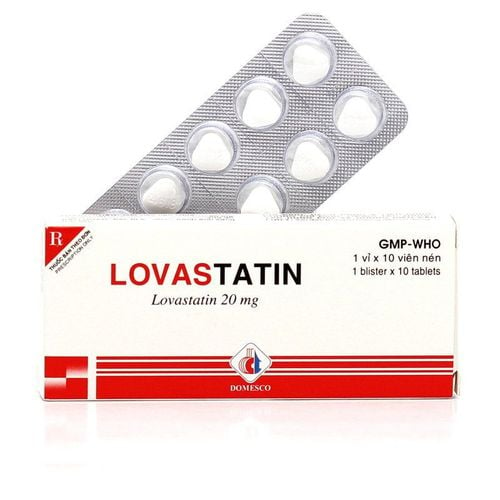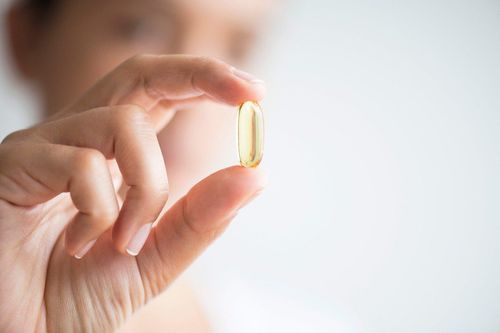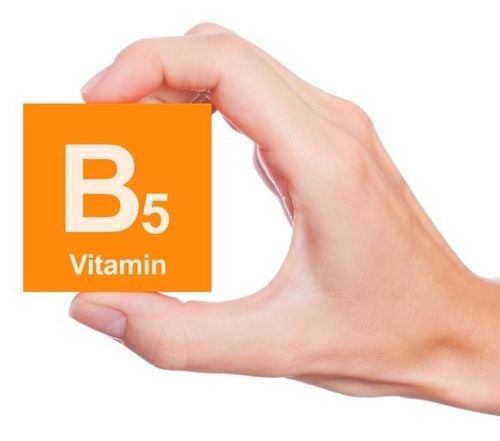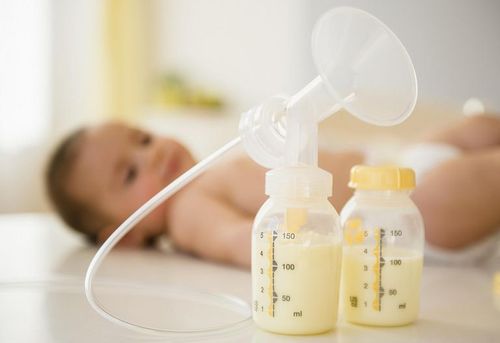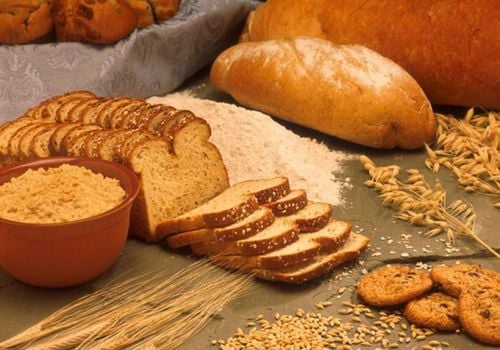This is an automatically translated article.
Breast milk is the best food for babies in the first 6 months of life; Breast milk keeps babies healthy and increases resistance. Breastfeeding also brings many benefits for mothers such as: Fast weight loss, release of oxytocin hormone, reduced risk of breast cancer and ovarian cancer.
1. Nutrition in breast milk
Breast milk contains nutrients such as protein, carbohydrates, vitamins and minerals, and trace elements that your baby needs for healthy growth, in the amounts needed for the needs of each baby's age.
The content of breast milk adapts precisely to the needs of the baby throughout development. The first drops of breast milk are called colostrum (4-5 days after birth) which has a different composition than transitional milk (from 5 days to about 2 weeks postpartum) or mature milk.
Per 100ml of breast milk about: 65 calories; 6.7g carbohydrates (mainly lactose); 3.8g fat; 1.3g protein. The milk fat content can range from 2g/100mL to 5g/100mL.
2. Understanding milk fat
Fat makes up only a small portion of breast milk. But it is responsible for most of the calories in breast milk. And it's very important for the health of babies.
Fat is needed to metabolize many vitamins, it affects growth rate. In addition, certain fatty acids found in breast milk - long-chain polyunsaturated fatty acids, or LCPs - may play an important role in brain development. Especially docosahexaenoic acid (DHA).

Sữa mẹ có hàm lượng dinh dưỡng cao tốt cho sự phát triển của bé
DHA helps the brain produce myelin, the insulating sheath of nerve fibers. In research done decades ago, researchers found that the brains of breastfed babies have higher levels of DHA than the brains of formula-fed babies.
Cholesterol is another fat component of breast milk that is important for brain development. Like DHA, cholesterol is important for the production of myelin.
3. Understanding the protein in milk
There are two types of proteins in milk namely caseins and whey:
Casein turns into blood clots or curds in the stomach. The whey remains liquid and easier to digest. Protein as the building blocks of muscles and bones. But proteins serve a host of other functions, including defense against pathogens. Other antibacterial factors in breast milk, it protects the respiratory tract and intestinal tract of breastfed infants.
4. Other ingredients in milk
Each liter of mature breast milk also contains:
Cholesterol in concentrations between 100 and 150 mg/L Calcium in concentrations ranging from 254 to 306 mg/L Sodium at concentrations between 140 and 220 mg / Phosphorus in concentrations ranges from 188 to 262 mg/L Vitamin C at a concentration of 50 to 60 mg/L (assuming the mother consumes more than 100mg of vitamin C per day) Magnesium at a concentration of about 35 mg/L and a much smaller amount of zinc , pantothenic acid, nicotinic acid, iodine, vitamin A and copper. Breast milk contains trace amounts of other vitamins and minerals (including vitamins E, K, D and B vitamins) and a range of hormones, growth factors, and infection-fighting substances Iron levels can range from 0.2 to 0.9 mg/L.
5. Some solutions to enhance nutrients in breast milk
5.1 Take prenatal vitamins Don't take supplements without consulting your doctor. Certain vitamins such as A and D can have toxic effects at high doses.
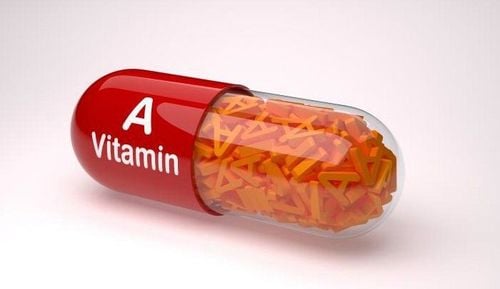
Không nên tự ý bổ sung vitamin A khi chưa có sự chỉ định của bác sĩ
5.2 Limit saturated fat The Western diet is very high in saturated fat. Babies who consume breast milk high in saturated fat have an increased risk of developing high blood pressure.
5.3 Increase your DHA levels Increase your DHA levels by consuming certain plant products, or taking a plant-based omega-3 supplement.
5.4 Breastfeeding on demand This allows your baby to adjust their intake in response to changes in breast milk.
If you have a need for consultation and examination at the Hospitals of the National Health System, please book an appointment on the website for the best service.
References: mayoclinic.org, parentingscience.com
Please dial HOTLINE for more information or register for an appointment HERE. Download MyVinmec app to make appointments faster and to manage your bookings easily.
SEE MOREBreast milk is thin and clear, what to do? How is breast milk "produced"? What is the normal taste and color of breast milk?




